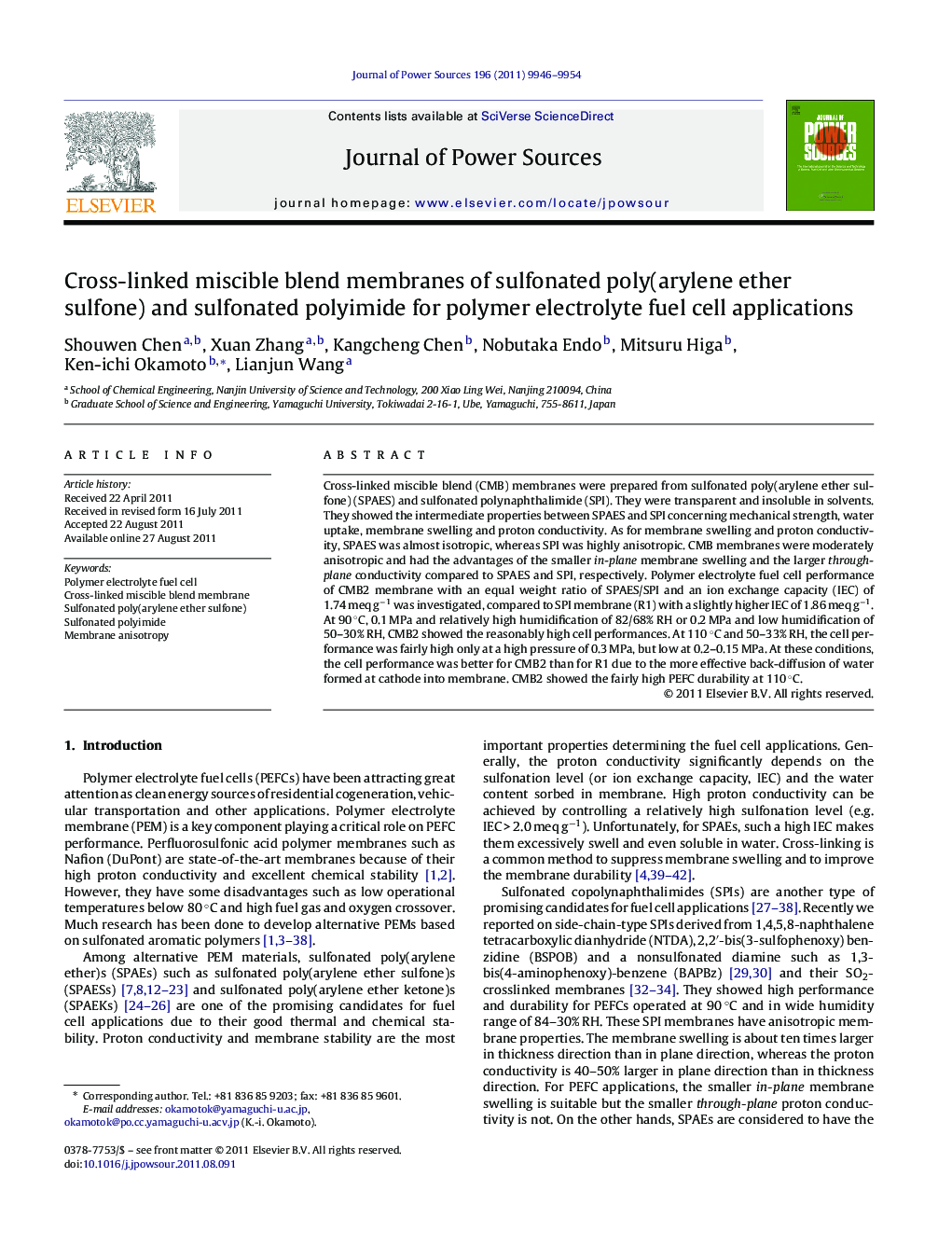| Article ID | Journal | Published Year | Pages | File Type |
|---|---|---|---|---|
| 1288653 | Journal of Power Sources | 2011 | 9 Pages |
Cross-linked miscible blend (CMB) membranes were prepared from sulfonated poly(arylene ether sulfone) (SPAES) and sulfonated polynaphthalimide (SPI). They were transparent and insoluble in solvents. They showed the intermediate properties between SPAES and SPI concerning mechanical strength, water uptake, membrane swelling and proton conductivity. As for membrane swelling and proton conductivity, SPAES was almost isotropic, whereas SPI was highly anisotropic. CMB membranes were moderately anisotropic and had the advantages of the smaller in-plane membrane swelling and the larger through-plane conductivity compared to SPAES and SPI, respectively. Polymer electrolyte fuel cell performance of CMB2 membrane with an equal weight ratio of SPAES/SPI and an ion exchange capacity (IEC) of 1.74 meq g−1 was investigated, compared to SPI membrane (R1) with a slightly higher IEC of 1.86 meq g−1. At 90 °C, 0.1 MPa and relatively high humidification of 82/68% RH or 0.2 MPa and low humidification of 50–30% RH, CMB2 showed the reasonably high cell performances. At 110 °C and 50–33% RH, the cell performance was fairly high only at a high pressure of 0.3 MPa, but low at 0.2–0.15 MPa. At these conditions, the cell performance was better for CMB2 than for R1 due to the more effective back-diffusion of water formed at cathode into membrane. CMB2 showed the fairly high PEFC durability at 110 °C.
► Cross-linked blend membranes of sulfonated poly(arylene ether sulfone)/polyimide. ► Smaller in-plane membrane swelling and larger through-plane conductivity. ► Higher cell performance due to more effective back-diffusion of produced water. ► High PEFC durability at 110 °C and 50–33% RH.
